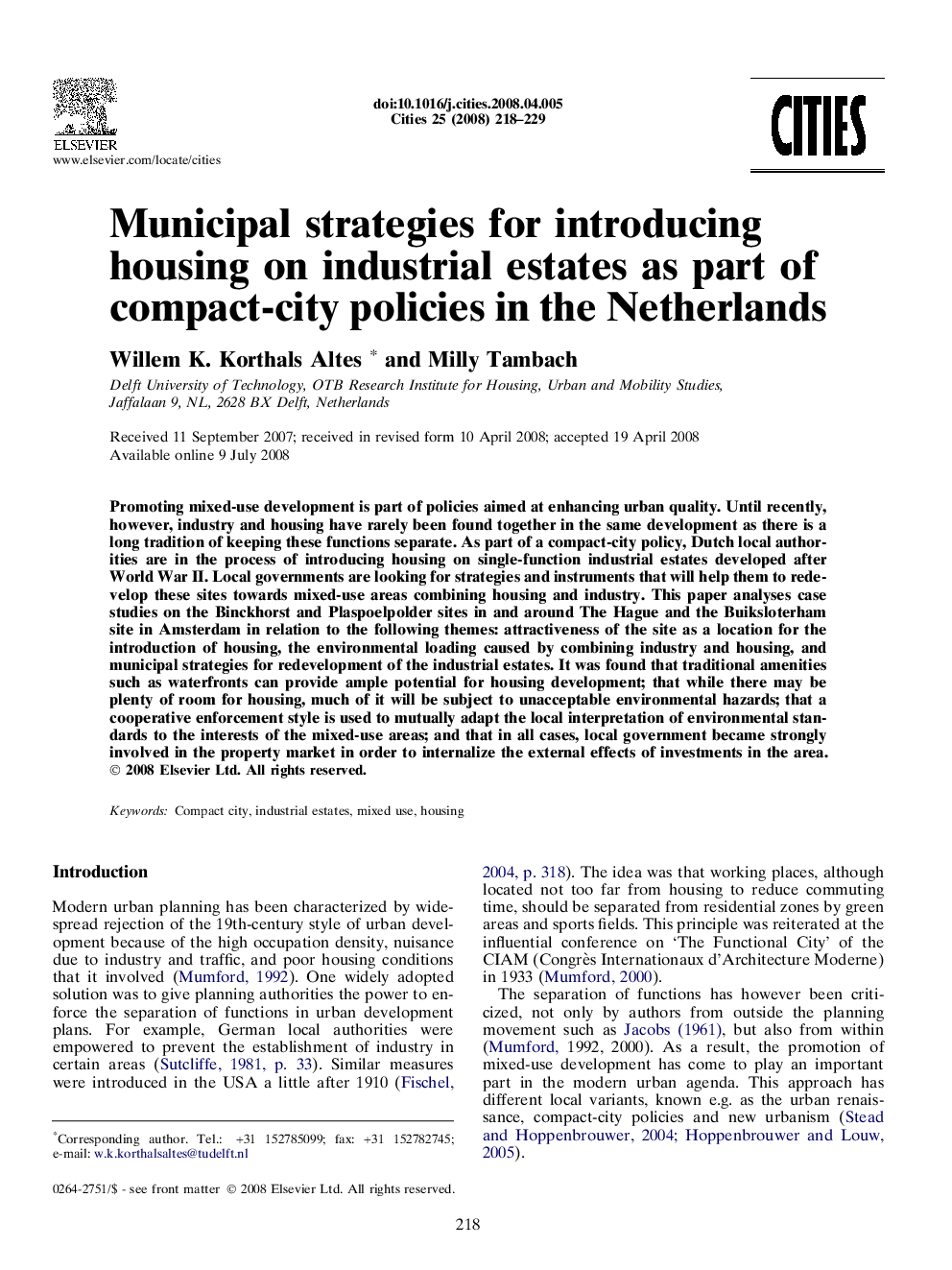| Article ID | Journal | Published Year | Pages | File Type |
|---|---|---|---|---|
| 1008915 | Cities | 2008 | 12 Pages |
Promoting mixed-use development is part of policies aimed at enhancing urban quality. Until recently, however, industry and housing have rarely been found together in the same development as there is a long tradition of keeping these functions separate. As part of a compact-city policy, Dutch local authorities are in the process of introducing housing on single-function industrial estates developed after World War II. Local governments are looking for strategies and instruments that will help them to redevelop these sites towards mixed-use areas combining housing and industry. This paper analyses case studies on the Binckhorst and Plaspoelpolder sites in and around The Hague and the Buiksloterham site in Amsterdam in relation to the following themes: attractiveness of the site as a location for the introduction of housing, the environmental loading caused by combining industry and housing, and municipal strategies for redevelopment of the industrial estates. It was found that traditional amenities such as waterfronts can provide ample potential for housing development; that while there may be plenty of room for housing, much of it will be subject to unacceptable environmental hazards; that a cooperative enforcement style is used to mutually adapt the local interpretation of environmental standards to the interests of the mixed-use areas; and that in all cases, local government became strongly involved in the property market in order to internalize the external effects of investments in the area.
